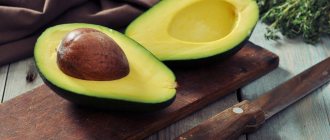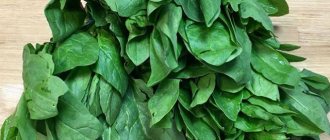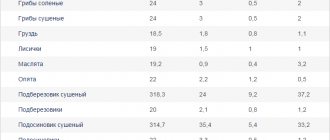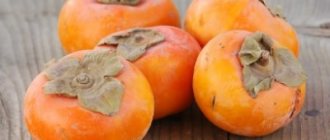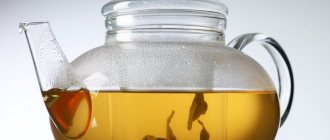Beneficial features
During breastfeeding, this spice can be added to a woman’s food and drink due to its beneficial effects.
Consuming cinnamon in small quantities has a preventive, therapeutic, and cosmetological effect. Effect on the body:
- antibacterial, antiviral, antifungal;
- strengthens the immune system, cardiovascular system, bone tissue;
- reduces blood sugar levels;
- improves digestion, brain activity, psycho-emotional state;
- burns fat, converts glucose into energy;
- dilates blood vessels;
- increases the production of gastric juice;
- removes excess fluid, which reduces swelling;
- antioxidant, cleanses the body of waste and toxins;
- protects against the formation of blood clots;
- improves memory;
- restores performance;
- has an analgesic effect for menstrual, headache, and toothache.
On a note! When breastfeeding, cinnamon is recommended for women in a depressed state, as well as for insufficient lactation.
Why is it useful?
Cinnamon affects the body of a nursing mother on several fronts at once:
- For slimness. Promotes the conversion of glucose into energy rather than into fat deposits. Tea or herbal decoction with this spice will help you get back into shape faster after childbirth.
- Reduces blood sugar levels. Recommended for diabetics, especially in combination with kefir.
- Antiseptic. Helps the body fight viral infections and fungal diseases.
- Strengthens the immune system, prevents and treats colds. Cinnamon is included in some antiviral drugs; helps cope with acute respiratory infections, flu and other seasonal diseases.
- Stimulates the functioning of the gastrointestinal tract. It has a beneficial effect on the functioning of the digestive system, relieves gas formation, diarrhea and constipation.
- Good for the kidneys, removes excess fluid.
- Gives a good mood. It has a pleasant aroma that charges you with vigor and energy.
Substances that enter the mother’s body through food also affect the baby through breast milk.
Recipe for colds
- Take 0.5 tsp. pharmaceutical chamomile, 0.5 tsp. cinnamon, ¼ tsp. anise
- Stir and let it brew in 1 liter of hot boiled water.
- Take before bed.
The drink has an anti-cold and calming effect, helps reduce fever without the use of medications.
Precautionary measures
Contraindications include:
- The baby has allergies. Appears in some especially sensitive children.
- If the next pregnancy occurs during lactation, cinnamon should not be consumed. It causes the uterus to contract, which can cause premature birth.
- Liver diseases. The spice contains coumarin, a potent substance that, if exceeded, can negatively affect the functioning of the main organ of the hepatobiliary system (HBS).
- Poor blood clotting. Cinnamon has blood thinning properties, which is especially dangerous during the postpartum period (6-8 weeks). Therefore, women who have problems with blood clotting are better off not taking risks.
- High blood pressure. Although cinnamon is praised for its ability to lower blood pressure, it is contraindicated for people with frequent episodes of hypertension.
- Stomach ulcers and other gastrointestinal pathologies associated with low acidity.
- Drug treatment. Biologically active substances in spices change the effect of medications: either reduce their effectiveness or cause side effects.
Attention! In some women, excessive consumption of cinnamon can cause headaches and apathy, and provoke the appearance of swelling and skin rashes.
Is it possible to have cinnamon during breastfeeding?
Pediatricians allow the addition of spice in small quantities during natural feeding in the absence of contraindications and side effects for the baby and nursing mother. In the first month, use is prohibited. An exception is the recommendation of a gynecologist if the uterus contracts poorly after childbirth, or a breastfeeding specialist (if lactation is weak).
In other cases, it is permissible to diversify the menu with this spice only after the baby grows a little and gets stronger. It is important to use high-quality products, store them correctly, follow the recommendations for use, and monitor the baby’s well-being.
Cinnamon will only be beneficial if consumed in moderation.
The effect of cinnamon on the taste of breast milk and on the baby
A large amount of the additive changes the taste of mother's milk, which can cause the baby to refuse the breast. This is one of the main reasons why cinnamon is prohibited during the period of establishing breastfeeding for a newborn. The child must adapt to a new type of food, and an unpleasant or unusual taste or discomfort will provoke a reluctance to drink mother’s milk.
The most likely side effect on a baby is an allergic reaction in the form of a rash, itching, redness, and peeling of the skin. Possible indigestion, colic, bloating, problems with stool. The nervous system may experience moodiness, unreasonable crying, and poor sleep.
Fragrant cinnamon: origin, beneficial and harmful qualities
Cinnamon is obtained by cutting the inner thin layer from the bark of trees of the same name (cinnamon, or Ceylon cinnamon), growing in India and on the island of Sri Lanka. You can find this fragrant spice on the shelves in the form of tubes or powder. It has a golden brown color and a slightly sweet aroma. The seasoning is used in baking, canning, seasoning meat and fish dishes, is used in making chocolate, and added to tea and coffee.
Cinnamon is obtained from the bark cut from the tree.
It is important to know that in addition to the real Ceylon variety of cinnamon, there is also a similar plant variety - cassia, or Indonesian cinnamon. The seasoning obtained from its bark has a toxic composition (due to coumarin); if consumed in large quantities, it can cause headaches, liver disorders, and hepatitis. In order not to confuse these varieties, you need to carefully study their external differences. Cassia bark has a dark red-brown color and a dense structure. The aroma is weakly expressed, the burning and pungent taste is enhanced. The cinnamon tube, on the contrary, is thin and fragile, light brown or yellow-brown in color, and has a refined and mild aroma.
Externally, cinnamon is much lighter than cassia and has a crumbly structure
To distinguish cinnamon from ground cassia, you need to pay attention to the composition of the package. The real spice is labeled as Cinnamomum zeylonicum (“Ceylon cinnamon”), and the Chinese equivalent is Cinnamomum aromaticum (“Aromatic cinnamon”). It is also worth paying attention to the country of origin. India and Sri Lanka are producers of Ceylon cinnamon. China, Vietnam and Indonesia are flooding the markets with Malaysian cassia.
Video: how to distinguish cinnamon from cassia
The composition of cinnamon is impressive. Seasoning contains:
- tannins,
- essential oil,
- a number of vitamins (such as A, B, K, C, E and PP),
- sodium,
- potassium,
- magnesium,
- calcium,
- manganese,
- zinc,
- iron,
- selenium.
Cinnamon has beneficial properties for most human vital organs, it:
- improves brain functionality, increases memory and alertness;
- improves the activity of the central nervous system, indispensable for stress and depression;
- helps strengthen the immune system, protects against bacteria, fungi, viruses and parasites;
- has antipyretic and anti-inflammatory properties;
- expels excess water and salt deposits from the body due to the diaphoretic and diuretic effect;
- used for the prevention of malignant tumors;
- relieves spasms in the stomach and irritation in the intestines, eliminates bloating;
- has a beneficial effect on the condition of tooth enamel, protects against caries, reduces bleeding gums;
- reduces cholesterol in the blood, normalizes the functioning of the heart muscle;
- enhances hair growth, helps in the fight against skin diseases (eczema, acne);
- helps normalize blood pressure;
- used for diabetes - lowers blood glucose levels, stimulates insulin production.
In addition, cinnamon essential oil is used as a medicine. Ceylon cinnamon is chosen for these purposes because it contains the most beneficial substances. Used to treat colds and viral diseases. Cinnamon oil is also added to anti-arthritis ointments, as it has a pronounced warming effect.
If we talk about the dangers of the cinnamon plant, the negative consequences here are directly related to the amount of its consumption:
- in stressful conditions, a large amount of seasoning eaten does not relieve tension from the nervous system, but increases it. Therefore, it is important to use no more than one teaspoon per day of this substance;
- excessive consumption of cinnamon causes irritation of the stomach walls and aggravates gastritis (due to its pronounced burning property);
- during pregnancy, the spice provokes uterine contractions;
- if you have individual intolerance or low blood clotting, you should also refrain from using cinnamon;
- For diseases of the liver, kidneys and urinary tract, the spice should be consumed sparingly.
Cinnamon will only be beneficial if consumed in moderation.
The energy value of cinnamon per 100 g of product ranges from 247 to 261 kcal. It contains more carbohydrates than proteins and fats. It is worth considering that since the spice is used in small quantities, the calories consumed are very small.
Video: beneficial properties and harm
Harm and contraindications
Spice rarely has a negative effect on the baby if the nursing mother maintains the permissible amount. Exceeding the dosage can cause headache, weakness, and a depressed emotional state. A true allergy to cinnamon is not very common, but it can have serious consequences for the baby. If the functioning of the kidneys or liver is impaired, the spice should be discarded, as it creates an extra burden.
Contraindications:
- high blood pressure;
- heat;
- allergic reactions;
- individual intolerance;
- gastritis, stomach ulcer;
- nervous excitability;
- low blood clotting;
- elderly age.
On a note! There is an opinion that during breastfeeding and pregnancy the diet is the same. In this case, this is not the case; the spice increases uterine contractions and can cause miscarriage.
Effect of cinnamon during breastfeeding
For a long time, cinnamon has been famous for its ability to increase the volume of breast milk.
In addition, cinnamon can bring many more benefits to a nursing mother and her baby, it:
- normalizes metabolism, thereby improving water-salt balance and losing extra pounds;
- strengthens the mucous membrane of the stomach and intestinal walls, improves the functioning of the gastrointestinal tract;
- good for preventing constipation and intestinal disorders;
- thanks to its pronounced antiseptic properties, it protects not only the mother, but also the baby from colds;
- helps renew tissue in the liver due to its choleretic effect;
- has an immunostimulating effect;
- prevents hair loss and stimulates its growth;
- due to the calcium content (1002.0 mg per 100 g of product), it flushes out harmful salt accumulations and supports the body of a nursing mother.
But there are cases when it is better for nursing mothers to refrain from consuming cinnamon:
- with heavy bleeding after childbirth, since the seasoning dilates blood vessels and stimulates strong uterine contractions;
- in case of individual intolerance in the mother and allergies in the baby;
- for liver diseases (due to the coumarin contained in the composition). This is especially true for Chinese cassia. Indeed, unlike real cinnamon (coumarin content is 0.02 mg per 100 g of product), it contains up to 2 mg of this substance per 100 g of product.
You should always remember that if you consume the spice in large quantities, the taste of breast milk will deteriorate.
Introducing cinnamon into the menu of a nursing mother
Adding this product to a woman's diet during breastfeeding is similar to other new components. The baby should be about 4 months old, the state of health and well-being is satisfactory.
Introduction rules:
- try in the morning;
- first add a small pinch to your usual drink or dish;
- watch the baby;
- gradual introduction and increase in quantity;
- keeping a food diary;
- sufficient drinking regime.
On a note! When breastfeeding, it is not recommended to consume baked goods with this additive more than once a week.
How much cinnamon do you have?
It is allowed to add ½-1 tsp per day. powder. It is permissible to diversify the diet in this way during breastfeeding 2-3 times per week. Increasing the dosage or frequency of use is undesirable; it may provoke an adverse reaction in a nursing mother or child.
You can consume no more than 1 teaspoon of cinnamon per day.
On a note! The spice must be fresh. When preparing hot dishes, add it 5 minutes in advance. before readiness, but better after completion of heat treatment.
Cinnamon and lactation
When consumed in excess, cinnamon changes the habitual taste of human milk for a baby. But in reasonable quantities, for example, as part of healthy drinks, the spice supports lactation.
Recipe to improve milk production
- Mix 1 tsp. cinnamon and milk with 2 tsp. Sahara.
- Pour a glass of milk into a small saucepan and add a handful of chopped walnuts.
- Place on the stove and keep for 15–20 minutes, without allowing the mixture to boil.
- Add the prepared cinnamon and sugar mixture and mix thoroughly.
- Cook for about 5 minutes more.
Take before bed, but no more than 1-2 times a week.
Ceylonese or Chinese?
Products from China known as cassia are widely distributed. The variety is characterized by a strong spicy taste. Available in the form of powder or rough, hard brown sticks. These are low quality products and contain coumarin, which has a toxic effect. Considering that the product from supermarkets in most cases is Chinese cinnamon, when breastfeeding you should be especially careful when adding cassia to food.
The Ceylon variety is considered a real, standard spice. The harmlessness and most of the beneficial properties of the supplement relate specifically to it. The stick consists of a thin (up to 1 mm) leaf of light brown color, has a sweetish, slightly warming taste and delicate aroma. The product belongs to a high price category.
On a note! There are 2 more types of cinnamon - Malabar and cinnamon. In terms of quality and organoleptic characteristics, they are inferior to the described varieties.
Benefits of cinnamon
The seasoning has many beneficial properties known to mankind for many centuries.
Today, the spice is used in many areas of cooking. It is important to consider that the benefit of a product for one organism does not mean that it will suit another. Any product must be introduced carefully, gradually, monitoring the baby’s reaction in this case.
Among the beneficial qualities of cinnamon are:
- Helps activate metabolism, leading to the loss of unnecessary pounds.
- The presence of dietary fiber promotes the active removal of harmful salts.
- Regular intake of treats helps strengthen the gastric walls and activates the normal function of the gastrointestinal tract.
- Strengthens the heart, improves the functioning of the circulatory system.
- Cholesterol levels are gradually reduced and the risk of heart attack is prevented.
- A large amount of calcium has undeniable benefits during breastfeeding.
- Known among people as an essential antioxidant.
- Immunity increases.
- Known as a natural antioxidant and antiseptic drug.
- Used for colds, acute respiratory viral infections, and symptoms of influenza.
- Allows you to relieve skin irritations using it as a cream.
- Properties that increase performance, improve well-being and mood.
The benefits of cinnamon are difficult to overestimate; the main thing is to properly introduce it into the diet of breastfeeding women. The spice will help in the right amount to benefit mother and baby.
When and how to introduce it into the diet of a nursing mother
Cinnamon is an allergenic product. Therefore, you should not use this spice immediately after giving birth. Then the spice should be gradually introduced into the diet. It is better to give preference to cinnamon in the form of sticks rather than powder.
Cinnamon sticks
For the first time, you should try just a little spice - literally on the tip of a knife. If there are no negative reactions, the amount is gradually increased. Subsequently, you are allowed to eat no more than 2 g of product per day.
Selection rules
The health and mood of the baby depends on the nutrition of a nursing mother, so you need to approach the choice of cinnamon responsibly. During this period, it is better to choose cinnamon sticks rather than buy the spice in powder. It may contain a product that is not of the highest quality, with impurities, anti-caking additives, to increase shelf life. This is not suitable for a nursing woman; a natural product is needed.
There are two types of cinnamon sticks on sale: Ceylon cinnamon and Chinese cassia. The latter contains too much coumarin, a harmful substance that leads to liver diseases. When choosing cinnamon, you must adhere to the following rules:
Be sure to check the country of manufacture. Do not buy chopsticks from Vietnam, China, Indonesia, Israel, USA, Germany. The best product is produced in India, Ceylon (Sri Lanka).
Ceylon cinnamon is labeled “Cinnamomum zeylonicum” or “Cinnamomum verum”, its price is more expensive, cassia is cheaper; on the packaging it says “Cinnamomum aromaticum” or “Cinnamomum cassia”.
The natural spice smells sweet and soft. Cassia has a rougher and more intrusive aroma.
The structure of a quality product consists of many twisted curls. In cassia it is denser, rougher, and rougher to the touch.
High-quality Ceylon sticks are uniformly colored and light; cassia has heterogeneous tones from red to brownish-brown.
Ceylon spice sticks are evenly twisted on both sides, forming the so-called “ram's horns”. Cassia twists difficultly, bends poorly, and can remain straight.
Good cinnamon sticks can be ground into powder. Cassia will break and crumble into fibers.
It is better to make the powder yourself by rubbing a high-quality cinnamon stick between your fingers.
Potential Harm
Nursing women should use cinnamon with caution. It can cause allergies in sensitive babies. The spice contains coumarin. This potent substance causes liver disease when consumed in excess. If a woman already has problems with this organ, then she should consult with her doctor about the wisdom of including cinnamon in the menu.
The aromatic spice provokes uterine contractions. This needs to be taken into account. If pregnancy occurs during this period, there is a risk of miscarriage. Cinnamon thins the blood, which is dangerous after childbirth. If you have poor blood clotting, it is better not to use the spice. Cinnamon may interfere with the effects of certain medications. Active ingredients from spices can reduce or increase their effectiveness and cause negative consequences.
Why is it harmful?
Like any other spice, cinnamon should be consumed in doses. It may cause an unwanted allergic reaction in some people. It also contains the plant poison coumarin, which in too large quantities can harm the kidneys and liver. This seasoning is contraindicated for high blood pressure and diseases of the gastrointestinal tract. Is it possible to have cinnamon during breastfeeding? Doctors strongly recommend not to abuse the spice during pregnancy, as it can cause uterine contractions and cause miscarriage. The acceptable amount is half a teaspoon per day, no more.
